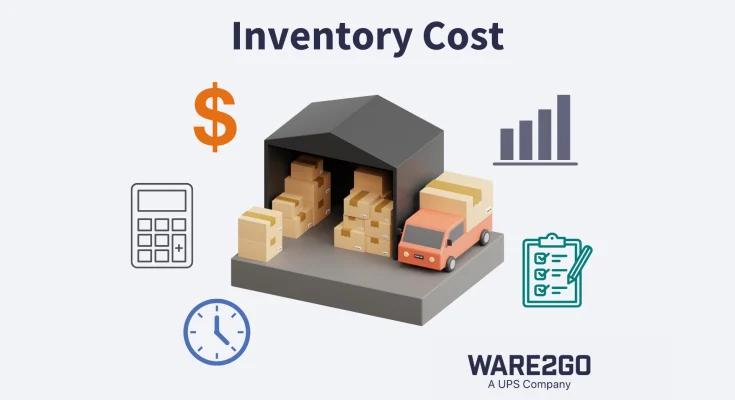E-commerce businesses thrive on fast turnaround, lean operations, and efficient inventory management. But one thing that quietly eats away at profits is holding cost—the hidden expenses tied to storing unsold goods. These costs include warehousing, depreciation, insurance, obsolescence, and even the opportunity cost of unsold stock. Reducing inventory holding costs doesn’t mean slashing stock blindly—it means optimizing your entire supply chain for smarter, leaner storage. Here’s how to do just that.
Understand What Makes Up Holding Costs
Before solving the problem, get clear on what it is. Holding costs go beyond just paying for storage space. They include utilities, security, shrinkage (loss due to theft or damage), insurance premiums, equipment, and employee wages related to inventory handling. Inventory that sits too long ties up cash and space—both of which could be used more effectively elsewhere in the business.
When e-commerce stores overlook these costs, they often end up with bloated warehouses and slow-moving products. By understanding the real financial burden of holding inventory, you can take steps to reduce it in a strategic, non-destructive way.
Use Demand Forecasting to Prevent Overstocking
Guesswork is a recipe for waste. Smart businesses rely on demand forecasting to predict how much inventory they’ll need over a specific period. Historical sales data, seasonal trends, and upcoming promotions can all feed into a forecast that helps you avoid ordering too much or too little.
When forecasting is done well, it reduces both excess stock and the panic of last-minute reorders. The goal is to stock just enough to meet demand without overcommitting shelf space to products that won’t move quickly. Not only does this lower holding costs, but it also improves cash flow and customer satisfaction.
Adopt a Just-In-Time (JIT) Inventory Strategy
The just-in-time inventory model revolves around receiving goods only as they are needed. This method slashes holding costs by keeping storage levels to a minimum. While JIT comes with some risk—such as delays in supply chain delivery—it’s incredibly effective when paired with solid supplier relationships and a responsive fulfillment setup.
For e-commerce businesses with predictable sales patterns, JIT keeps stock levels agile and responsive. It’s also especially helpful for brands offering multiple SKUs or rapidly changing product lines, where aging inventory is a constant concern.
Categorize Inventory with ABC Analysis
Not all products deserve the same level of attention. ABC analysis breaks inventory down into three categories:
- A-items: high-value items with low sales frequency
- B-items: moderate value and sales frequency
- C-items: low-value but fast-moving products
This method lets you prioritize your focus. A-items may need tighter control and more precise stock levels, while C-items can be replenished more frequently in bulk. Understanding these categories helps reduce overstocking where it’s least needed and frees up resources for higher-priority items.
Invest in Real-Time Inventory Tracking
A lack of visibility is a major cause of high holding costs. Without real-time data, it’s easy to miss slow-moving stock or duplicate orders. A modern inventory system offers transparency across all SKUs, warehouse locations, and sales channels.
By knowing exactly what’s available and where it’s located, businesses can reduce the time and cost associated with manual checks, lost items, or emergency replenishment. It also helps with accurate reordering and streamlining restocks based on actual data—not assumptions.
Bundle Slow Movers with Fast Sellers
Deadstock is a silent killer for e-commerce profits. If certain products are slow to sell, consider bundling them with best-sellers or turning them into limited-time offers. This tactic helps free up warehouse space while still generating revenue from otherwise idle inventory.
Creative bundling not only improves sell-through rate but also adds perceived value for customers. It’s a win-win strategy that reduces carrying costs and boosts average order value.
Rotate Stock to Prevent Obsolescence
Stock rotation is crucial—especially for products with expiration dates or rapidly changing styles. The First-In-First-Out (FIFO) method ensures older inventory is shipped out before newer items, preventing write-offs and reducing holding costs due to outdated stock.
Even if your products aren’t perishable, maintaining a rotation strategy keeps your inventory fresh and minimizes the risk of dead stock building up unnoticed.
Consolidate Warehousing When Possible
Maintaining multiple small storage facilities can multiply your holding costs. If possible, consolidate inventory into fewer, strategically located warehouses. This simplifies inventory tracking, reduces handling, and lowers total storage fees.
Additionally, fewer touchpoints mean fewer errors in inventory movement. When operations are centralized, staff can work more efficiently, and shipping times can be optimized based on customer location data.
Regularly Audit and Clean Your Inventory
Make it a habit to perform physical inventory checks and audits at scheduled intervals. This helps identify discrepancies between recorded and actual stock levels. It also reveals obsolete, damaged, or misplaced items that contribute nothing but cost.
Use this opportunity to purge underperforming SKUs, clear discontinued items, and evaluate whether storage procedures are contributing to unnecessary delays or damage. Clean inventory means faster order fulfillment and lower long-term expenses.
Analyze the True Cost of Storage Per SKU
Every product has a different cost-to-store ratio. Heavy, bulky items often consume more space and labor compared to smaller, higher-value products. Once you understand which items cost more to hold, you can make smarter decisions about your product mix and reorder frequency.
Consider reducing the size of large, slow-moving products or even eliminating certain SKUs entirely. Focusing on high-margin, fast-turnover items makes better use of limited space and capital.
Reducing inventory holding costs in e-commerce isn’t about cutting corners—it’s about working smarter. From better forecasting and stock rotation to bundling and SKU rationalization, these strategies can significantly lower your costs without sacrificing service quality or delivery speed. Treat your inventory like a living, breathing part of your business, and you’ll create a more agile, profitable operation that’s ready for anything the market throws your way.
You have not enough Humanizer words left. Upgrade your Surfer plan.




